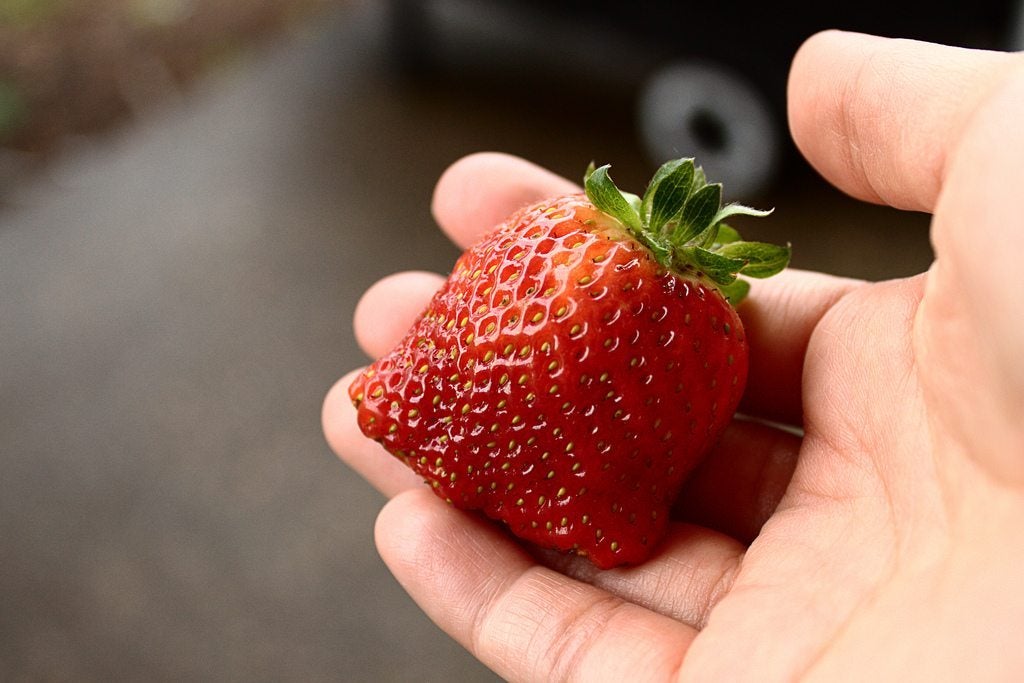Seascape Berry Info – What Is A Seascape Strawberry

Strawberry lovers who want more than one crop of the delicious, sweet berries opt for everbearing, or day-neutral cultivars. A terrific option for a day-neutral strawberry is Seascape, which was released by the University of California in 1992. Read on to find out about growing Seascape strawberries and other Seascape berry info.
What is a Seascape Strawberry?
Seascape strawberries are small, herbaceous, perennial plants that grow to only 12-18 inches (30.5-45.5 cm). As mentioned, Seascape strawberries are everbearing strawberries, which means they produce their delectable fruit throughout the growing season. The plants bear large, firm, brilliantly red fruit in the spring, summer and fall. According to most Seascape berry info, these strawberries are heat tolerant and disease resistant as well as being prolific producers. Their shallow root systems make them suitable not only for the garden, but for container growing as well. They are hardy in USDA zones 4-8 and are one of the premium strawberry cultivars for growers in the northeastern U.S.
Seascape Strawberry Care
Like other strawberries, Seascape strawberry care is minimal. They like nutrient rich, loamy soil with excellent drainage with full sun exposure. For maximum berry production, full sun is needed. This is where planting in a container may come in handy; you can move the container around and into the best sunny areas. Plant Seascape strawberries either in matted rows, high density plantings or in containers. Bare root strawberries should be planted about 8-12 inches (20.5-30.5 cm.) apart in the garden. If you choose to grow Seascape in containers, choose a container that has drainage holes and is at least 3-5 gallons (11-19 L.). When growing Seascape strawberries, be sure to provide them with one inch (2.5 cm.) of water per week depending upon weather conditions. If you are growing the berries in a container, they will likely have to be watered more frequently. Picking the strawberries frequently encourages the plants to fruit, so keep the plants well picked for a bumper crop of strawberries throughout the season.
Gardening tips, videos, info and more delivered right to your inbox!
Sign up for the Gardening Know How newsletter today and receive a free copy of our e-book "How to Grow Delicious Tomatoes".

Amy Grant has been gardening for 30 years and writing for 15. A professional chef and caterer, Amy's area of expertise is culinary gardening.
-
 Looking For Plants To Give You The Soft And Fuzzies? Try These 5 Fuzzy Leaf Plant Options
Looking For Plants To Give You The Soft And Fuzzies? Try These 5 Fuzzy Leaf Plant OptionsLovers of texture, drama, silver foliage and tactile plants will adore these special sensory garden additions. These fuzzy leaf plant options will leave you all aglow
By Susan Albert
-
 Get Ready For A Summer Of Hummers! Grow These Full Sun Hummingbird Plants and Flowers
Get Ready For A Summer Of Hummers! Grow These Full Sun Hummingbird Plants and FlowersIf you’re lucky enough to enjoy a sunny backyard, make sure you are maxing out on your pollinator opportunities and grow these full sun hummingbird plants and flowers
By Tonya Barnett